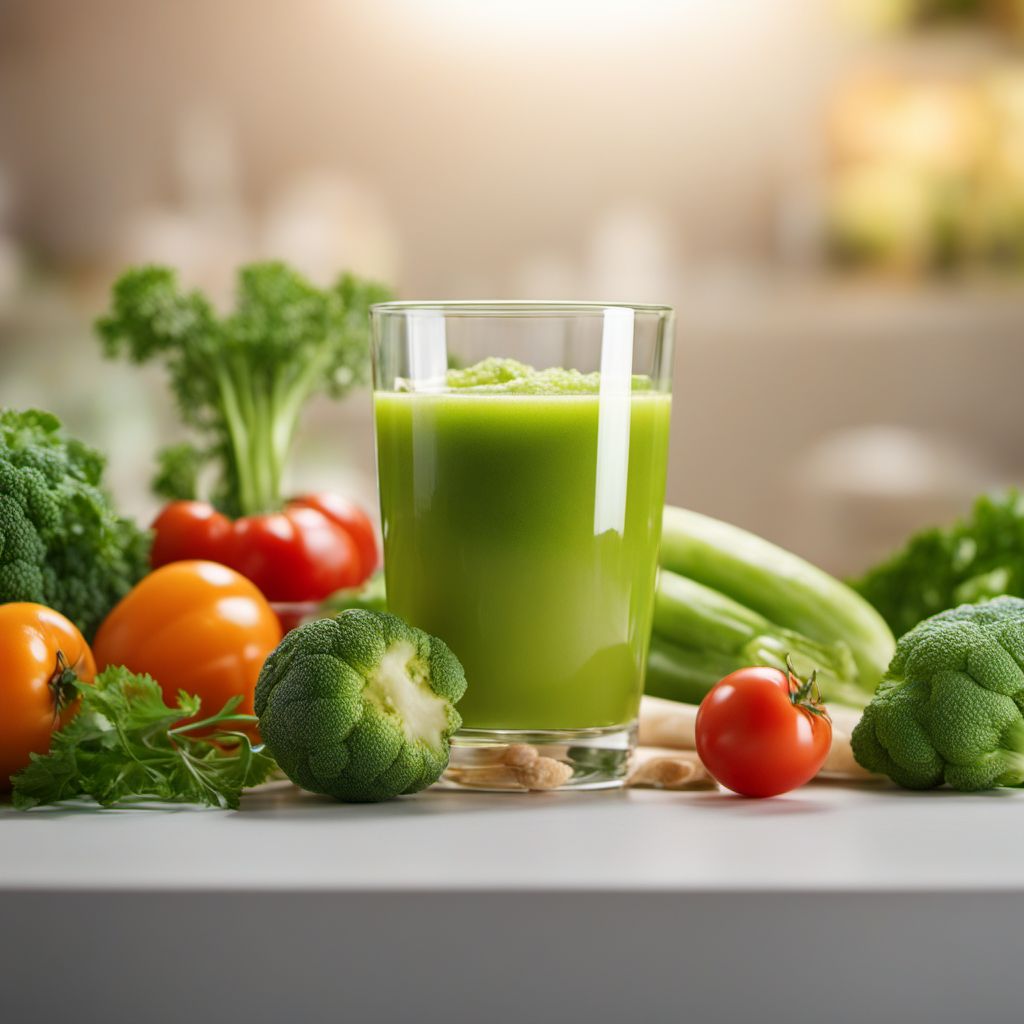
Ingredient
Mixed vegetable juice
The Nutrient-Packed Elixir
Mixed vegetable juice is a refreshing and nutritious beverage made by blending a variety of vegetables. It is a convenient way to consume a wide range of vitamins, minerals, and antioxidants in one glass. With its vibrant colors and fresh flavors, mixed vegetable juice is a popular choice for those seeking a healthy and hydrating drink.
Origins and history
Mixed vegetable juice has been enjoyed for centuries, with variations found in different cultures around the world. It is often associated with detoxification and cleansing due to its high nutrient content. Today, mixed vegetable juice is readily available in supermarkets and juice bars, offering a convenient option for individuals looking to boost their vegetable intake.
Nutritional information
Mixed vegetable juice is a low-calorie beverage that provides a concentrated dose of essential nutrients. It is rich in vitamins A, C, and K, as well as minerals like potassium and magnesium. Additionally, it contains antioxidants that help protect against oxidative stress and inflammation.
Allergens
Mixed vegetable juice may contain allergens depending on the specific vegetables used. Common allergens include celery, carrots, and tomatoes. Individuals with known allergies should check the ingredient list or consult with a healthcare professional before consuming.
How to select
When selecting mixed vegetable juice, opt for freshly made or cold-pressed varieties whenever possible. These options tend to retain more nutrients compared to pasteurized or shelf-stable versions. Look for juices that are made from organic vegetables to minimize exposure to pesticides and other chemicals.
Storage recommendations
To maintain the freshness and quality of mixed vegetable juice, store it in an airtight container in the refrigerator. Consume it within 2-3 days to ensure optimal taste and nutritional value. Shake the container well before serving to redistribute any settled solids.
How to produce
Producing mixed vegetable juice at home is relatively simple. Start by selecting a variety of fresh vegetables, such as carrots, celery, cucumbers, spinach, and beets. Wash and chop the vegetables into smaller pieces, then blend them together in a high-speed blender or juicer. Strain the juice if desired, and serve it immediately for maximum freshness and nutritional benefits.
Preparation tips
Mixed vegetable juice can be enjoyed on its own as a refreshing beverage or used as a base for smoothies and cocktails. It can also be incorporated into soups, sauces, and marinades to add depth of flavor and nutritional value. Additionally, mixed vegetable juice can be used as a substitute for water or broth when cooking grains or simmering vegetables.
Culinary uses
Mixed vegetable juice is commonly used as a standalone beverage or as a base for smoothies. It is also a popular ingredient in detox programs and juice cleanses. Culinary applications include using it as a marinade for meats or as a flavor enhancer in soups and sauces.
Availability
Mixed vegetable juice is widely available in supermarkets, health food stores, and juice bars. It can also be made at home using a blender or juicer. The availability may vary depending on the region and seasonality of the vegetables used.


